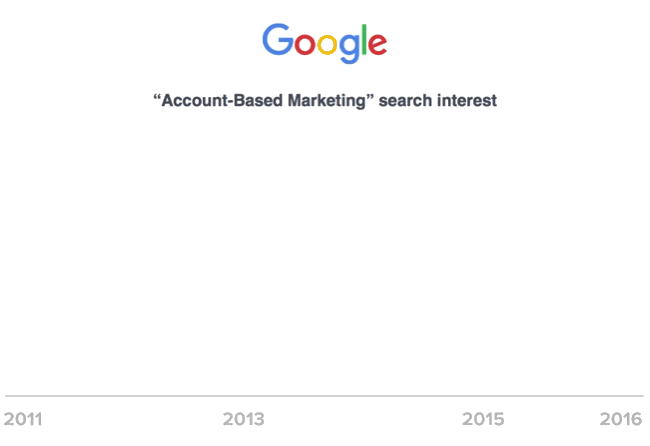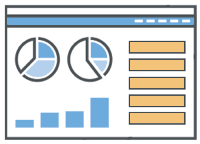As the B2B marketing arena continues to evolve, account-based marketing (ABM) has reemerged as an effective strategy for driving revenue. The trend hasn’t escaped the notice of marketing technology vendors. A number of companies have quickly adapted their offerings to accommodate ABM practices — further simplifying the approach for B2B marketers.
More than half (58%) of companies plan to invest in ABM services or technology in 2016.
— SiriusDecisions' 2016 State of Account-Based Marketing
Investment in ABM continues to grow as well. SiriusDecisions’ 2016 State of Account-Based Marketing study shows that 58% of companies plan to invest in ABM services or technology in 2016. Companies such as Brocade, Host Analytics and Limelight Networks are seeing substantial ROI from shifting their marketing strategies to focus heavily on target accounts.

In addition to expanding their offerings to meet ABM expectations, tech companies are integrating their solutions into other foundational B2B marketing platforms to provide a comprehensive approach to ABM, as well as an overarching view of how the programs impact the company’s bottom line.
Read on to learn how the growing interest in ABM — and the rapidly growing technology to complement the method — is positioning B2B companies to enhance their marketing initiatives.

Market Dynamics Prompt Growing ABM Interest, Tech Innovations
A number of shifting market dynamics have prompted a renewed interested in ABM, but two factors are key: First, sales organizations have focused on accounts, rather than individuals, for a number of years. As marketing teams increasingly aim to align their operations with the sales department, marketers are also shifting focus to an account-based approach to demand generation.
Marketing teams understand there are many ways ABM can deliver business impact and are reporting on a range of metrics focused on both demand creation and relationship improvement objectives."
— Megan Heuer, SiriusDecisions

Second, many B2B marketers are reconfiguring their demand gen strategies to prioritize qualified leads and conversions, rather than just driving lead volume at the top of the funnel. According to Demand Gen Report’s 2016 Demand Generation Benchmark Study, 83% of respondents ranked “focusing on lead quality rather than lead quantity” as their top demand generation priority. B2B marketers understand that their strategies need to target the stakeholders within an account who play a key role in buying decisions.
In fact, SiriusDecisions’ research shows that 87% of B2B companies say ABM is “extremely” or “very” important to their overall marketing efforts in 2016. The study also shows that 71% have staff members fully or partially dedicated to ABM — up from 68% in 2015.
“What is most exciting is that marketers are rapidly building ABM skills so they can deliver on its promise,” said Megan Heuer, VP of Research at SiriusDecisions, who presented the survey findings at the Marketing Innovation Summit for B2B. “Marketing teams understand there are many ways ABM can deliver business impact and are reporting on a range of metrics focused on both demand creation and relationship improvement objectives.”
Interest in ABM has grown to the point where tech companies are adapting their offerings to meet buyer expectations. Some recent announcements include:
- Demandbase’s partnership with Oracle to incorporate ABM into Oracle’s marketing automation platform;
- New groups such as the ABM Leadership Alliance have been formed by members of the technology community to educate B2B companies on developing and implementing ABM strategies;
- The launch of Engagio’s PlayMaker, an account-based communications platform; and
- A new ABM automation solution unveiled by Act-On Software designed to help orchestrate an automated, multichannel ABM strategy.
New advancements position B2B marketers to evolve how they utilize current tools and tactics in their arsenal. For example, Oracle’s partnership with Demandbase will enable users to implement account-specific campaigns directly in Oracle Eloqua Marketing Automation, instead of campaigns designed just for individual leads.

Gary Skidmore, CEO of the Aberdeen Group, agreed that while the process isn’t new, B2B marketers are showing greater interest in ABM because of the tech advancements that position users to automate processes and scale ABM programs. “[ABM] concepts have been fundamental to B2B organizations for quite some time,” he added. “In some ways, ABM is today's buzzword; It's not new, but there's always new tech.”
The evolution can also be attributed to a certain level of maturity in marketing automation, according to Colby Fazio, Senior Marketing Strategist at The Pedowitz Group. As marketers become comfortable with their automation platform, they increasingly look to ways to enhance their marketing objectives through integrations with other solutions, including ABM solutions. “No one says they are going to instantly buy into all this plug-in tech. Two or three years is the average length of time when people start to understand and optimize what they have available to them.”
Increased Integration Expected To Evolve Broad Marketing To ABM
Recent advancements in tech integrations are enabling B2B marketers to synch information from all of their solutions to complement an ABM mindset. This positions ABM practitioners to gain a holistic view of target accounts in a similar manner to how broader marketing initiatives provide detailed information on potential leads.
“It's important for the industry to come together in a way to help educate and streamline the way marketers bring different elements of their business together,” said Matt Senatore, Service Director for the Account-Based Marketing Practice at SiriusDecisions.

Much like the new tech offerings that are being made to execute ABM initiatives, integrations between ABM solutions and other technology vendors aim to streamline the process of synchronizing information throughout the user’s tech stack.
“[Marketers] have to invest in methodologies and processes to collect the right data to effectively measure."
— Gary Skidmore, Aberdeen Group
For example, Demandbase partnered with the demand generation company Integrate to help identify and collect leads from the Web through the company’s account-based advertising tool. This insight can help users close the loop and automate the process of moving leads within an account through their buying journey.
These integration capabilities also enable marketers to accurately measure their efforts and focus more on metrics that prove ROI from ABM initiatives. SiriusDecisions’ 2016 State of Account-Based Marketing study shows that over half (61%) of ABM practitioners are now measuring account engagement from marketing activities, up from 25% in 2015. More than half are also measuring online activity by target accounts (53%), up from 39% in 2015.
Skidmore noted that the data and analytics components of ABM measurement are where B2B marketers need to place their focus, and technology can help marketers in their measuring efforts.
“Marketing measurement has always been difficult,” Skidmore added. “[Marketers] have to invest in methodologies and processes to collect the right data to effectively measure. However, there is no doubt that [technology] makes it easier to measure.”

B2B Marketers See Impressive Results Generated From ABM Adoption
Brocade increased click-through rates on it's website by 144% with insight gained through ABM.
Studies show that ABM adoption is bringing value to B2B businesses. Research from ITSMA shows that 84% of B2B marketers believe ABM delivers higher ROI than any other approach.
Many companies with an established ABM process in place are seeing significant results. Networking solutions and services provider Brocade, for example, looked to generate greater demand from its company website. The company integrated its analytics platform with Demandbase’s Website Optimization suite, which helped them establish a baseline of how target accounts in the healthcare vertical engage with Brocade.

Other companies who are seeing success with ABM include:

The cloud-based enterprise performance management company implemented ABM to enhance the data within their database on target accounts, gain information on website visitors in real-time and engage with target accounts in a timely fashion, as compared to standard marketing practices. Early success with ABM encouraged the company to begin expanding its ABM initiatives beyond its enterprise-level target accounts to more mid-level accounts within its database.
The digital content delivery solution provider turned to ABM to enhance its online targeting and personalization strategy. The company was able to create more personalized interactions with target accounts, while also gathering detailed information on prospects to provide higher quality leads to sales. The company was able to increase its conversion rate by 30% within 45 days of implementing ABM.
Three Steps To Building An ABM Framework
While technology can help B2B organizations automate and scale their ABM initiatives, it is crucial to have a sturdy system in place to make sure that your ABM programs are aligned with the marketing team’s goals — as well as the company’s overall business goals.
This list will contain the companies with the highest propensity to buy from your business. It can include prospects, customers, partners or a mix of the three. There are a variety of approaches to building an account list — such as aligning with sales or leveraging predictive analytics — so it’s important to identify the approach that best fits your needs.
Once you have identified your top prospects, it is time to formulate marketing programs that are focused and personalized to meet their needs. This will help your target accounts move quickly and easily through the buying funnel and increase chances for conversion.
Measuring performance on the account level is much different than measuring performance on the lead level. A whole variety of different metrics are required to effectively identify performance and business impact for accounts compared with individual leads. Instead of focusing on secondary metrics like click-through rates and unique visitors, funnel performance for accounts can be measured with metrics such as:
- Target Account Activity;
- Close Rates; and
- Funnel Velocity.
Want to learn more about how to build an effective ABM framework? Click here to gain insight on other approaches to building account lists, account-focused marketing programs and metrics that tie account performance to business impact.
Questions? Send us an email at
info@demandgenreport.com.
Copyright © 2016 Demand Gen Report.
All Rights Reserved.





